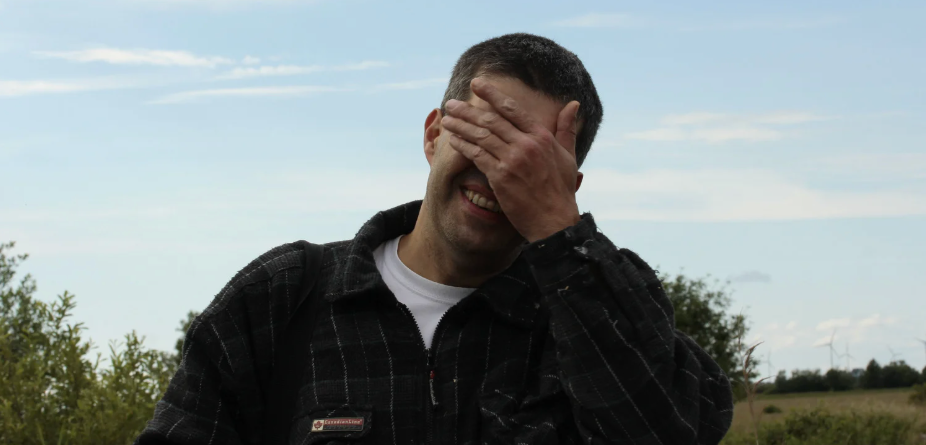I taught preschool in a migrant town. Here is the number one myth I wish people understood.
We spent weeks looking for help for a young child who was in pain.

I taught preschool in a migrant town. There's one myth that needs to end.
It seems that around every election season we hear about undocumented immigrants and how they're simultaneously stealing our jobs and collecting government benefits. This idea is common in farming communities and the surrounding areas since these communities tend to be rural with scarce job opportunities and poor wages. It's a phrase I heard most of my adult life and that I eventually learned was simply a myth to garner votes or support for certain policies.
For a few years, I taught "More at 4," a preschool program for low-income families in a small town in North Carolina. The town is full of fields with rows of crops growing everything from tobacco to strawberries. Old school busses packed with watermelons and trucks sprinkling tobacco leaves on the two-lane highway was the norm to see on my sleepy drive to work. Agricultural communities are usually heavily populated with migrant farm workers and their families.

Every spring and summer, the fields were lined with men and women picking fruit and vegetables with a speed that would rival a Marvel superhero. Every fall, my classroom would fill with adorable brown faces who would giggle at my Spanish when I clumsily told them to wash their hands. It always came out sounding more like a spell from Harry Potter than a directive in a language I didn't speak. Jedi was one of those students, a 4-year-old who was usually full of smiles until she wasn't.
My assistant teacher and I noticed a few months into the school year that Jedi was not as talkative and starting to sit by herself. This little girl loved to chat and play in the dramatic play area, pretending to be the mom while directing other kids in Spanish. Sitting alone was unusual for her, and we quickly realized that it was more than an upset stomach when she started crying every time it was time to eat. The language barrier made calling her mother tricky, but with the help of one of our bilingual students we made it work and quickly learned upsetting health news.

Most of Jedi's molars were rotting and broken. Her mother explained through our 4-year-old translator and the Google Translate app that the little girl's teeth had been hurting for some time. She had been giving her over-the-counter pain medication in the morning, hoping it would get her through the day. That worked for a while, but the cavities got worse over the months.
Since our program was for low-income families, nearly every child had Medicaid, so at first we didn't understand why this sweet girl hadn't seen a dentist. It was during that conversation that we learned the children of migrant workers don't qualify for Medicaid or any other federal government assistance. Jedi didn't have a social security number and her birth certificate was from Guatemala. In order to receive Medicaid, which would've fixed her broken, infected teeth, she needed to be a U.S. citizen.

I watched helplessly as the girl's mother cried, explaining to a child no older than her own—who then translated the message to me—that they didn't know what to do. We promised to find a way to help the family and went to work. That afternoon, during regular pick up, Jedi's father came to the door with cash in hand. He was covered in sweat and dirt from the field. The worried dad explained that he didn't have a lot of money but could pay to help his daughter. After a brief back and forth with the translator app, he put his money away and left.
My assistant and I worked for a couple of weeks calling government agencies, angrily telling them it wasn't fair that they wouldn't help. She was just four years old and we were having to feed her applesauce, pudding, and yogurt because she couldn't chew. We called every agency we could think of and then went down the list of every dentist in town. We explained the situation over and over, hoping someone would do something.

Just when we were about to give up, we found a children's dentist who agreed to evaluate her teeth. He determined that her teeth were infected, several needed to be capped, and a couple of the broken ones needed to be pulled. This amazing dentist made sure she left with antibiotics and an appointment that same week to start the work. The dad was able to pay him with cash on a weekly basis until it was paid off, and Jedi got her smile back.
Her first days back at school were like show-and-tell. She would take bites of food and then break into a wide grin while showing off her silver caps. That sweet girl would never know the hours we spent on the phone or the anguish her parents went through while trying to get her care. At the time, Jedi's mother was pregnant with what turned out to be a baby sister, also without care.

While some states have expanded their Medicaid to include undocumented children and pregnant people, federally they're not covered, according to Healthinsurance.org. Currently there are only six states that expand state-funded Medicaid to undocumented people and 14 states that expand it to undocumented children who live in families that meet the income requirement. But even in the states that offer some form of state-funded Medicaid to undocumented individuals, the restrictions include income, and in some states, age.
In Illinois and New York, the only undocumented people that qualify for state-funded Medicaid are those under the age of 18 and those over the age of 65, though in New York undocumented pregnant people are also eligible. Washington state has an enrollment cap for undocumented individuals over 18 while California, Oregon, and Minnesota have no restrictions outside of income.
This means that the vast majority of undocumented immigrants are not eligible to receive government benefits. Immigrants who are in the U.S. lawfully are eligible for benefits under certain circumstances.

According to KFF, "In general, in addition to meeting other eligibility requirements, lawfully present immigrants must have a 'qualified' immigration status to be eligible for Medicaid or CHIP (Table 1), and many, including most lawful permanent residents or 'green card' holders, must wait five years after obtaining qualified status before they may enroll. They may enroll in Marketplace coverage and receive subsidies during this five-year waiting period."
"Some immigrants with qualified status, such as refugees and asylees, as well as citizens of Compact of Free Association (COFA) nations, do not have to wait five years before enrolling. Some immigrants, such as those with temporary protected status, are lawfully present but do not have a qualified status and are not eligible to enroll regardless of their length of time in the country. Individuals with Deferred Action for Childhood Arrivals (DACA) status are not eligible for Medicaid or CHIP, and implementation of a Marketplace coverage expansion for them remains subject to ongoing litigation," KFF adds.
While there is often concern around undocumented people getting more benefits than the average struggling American citizen, it simply isn't true. It's a myth meant to evoke feelings of scarcity and unfairness to sway people to support policies they may otherwise feel uncomfortable with.





 "You're hilariously brilliant at everything you hate."
"You're hilariously brilliant at everything you hate."  "Bridget is authentically herself…and triumphs in her own way."
"Bridget is authentically herself…and triumphs in her own way."  "They're written in some curious language that I can't really understand."
"They're written in some curious language that I can't really understand." 
 Woman in denim jacket covers face with sleeve, standing outdoors with blurred background.
Woman in denim jacket covers face with sleeve, standing outdoors with blurred background. Woman with outstretched arms in a sunlit field, enjoying the outdoors.
Woman with outstretched arms in a sunlit field, enjoying the outdoors. Lush forest with vibrant green and orange foliage in soft, misty sunlight.
Lush forest with vibrant green and orange foliage in soft, misty sunlight. Friends laughing and drinking coffee at a cozy cafe table.
Friends laughing and drinking coffee at a cozy cafe table. Woman with curly hair in sunlight, eyes closed, wearing a purple top.
Woman with curly hair in sunlight, eyes closed, wearing a purple top. Man smiling with hand over face, standing outdoors against a blue sky background.
Man smiling with hand over face, standing outdoors against a blue sky background. Hand painting a still life on canvas with blue and orange tones.
Hand painting a still life on canvas with blue and orange tones. Woman sitting on a chair in the water, writing in a notebook at sunset.
Woman sitting on a chair in the water, writing in a notebook at sunset.
 Wash the dishes before I get home from bowling! Photo by
Wash the dishes before I get home from bowling! Photo by  music video 80s GIF
music video 80s GIF 
 An embarrassed woman covers her face
An embarrassed woman covers her face A woman laughs while trying to hide her face from the cameraCanva
A woman laughs while trying to hide her face from the cameraCanva Green Flag GIF by The Last Talk Show
Green Flag GIF by The Last Talk Show A woman covers her faceCanva
A woman covers her faceCanva